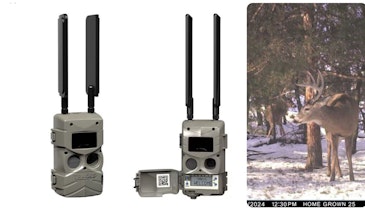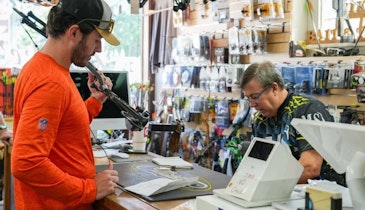Love it or hate it, social media has become, as ATA Senior Director of Communications and Administration Teresa Johnson put it, “the 500-pound gorilla that no business can afford to ignore.” While traditional avenues for reaching consumers can still be effective, Facebook — with its immense global audience, ability to easily share and interact with content, and ready accessibility — is a marketing medium that small retailers absolutely should be using to target current and potential customers.
“Facebook is impacting the decisions we make every day as consumers,” Johnson explained. A post from a mother whose child had a birthday party at an archery shop — complete with photos or even video — might inspire other parents to look into archery parties. A post with some great gift ideas for bowhunters might be what gets a non-archer into your store for a last-minute gift. And a rant by a disgruntled customer — whether it’s about service or an equipment failure — could impact the purchasing decisions of hundreds of his Facebook friends.
“People have said for the last couple years that Facebook is dying, that kids aren’t using Facebook anymore,” Johnson said. “We know that teenagers use Facebook, but they use it differently. They have a Facebook. They think it’s important to have it. They look at it; they lurk. They don’t necessarily post the way a Gen Xer or even a Boomer does. They’re looking for a much more instant gratification in Instagram or Snapchat.
“But the reality is they’re still using it, and they’re still seeing targeted content. So when you put budget behind posts, when we choose a very specific audience to show content to, they’re still seeing that content and they’re still consuming it. Even if we don’t see them doing it, they’re doing it.”
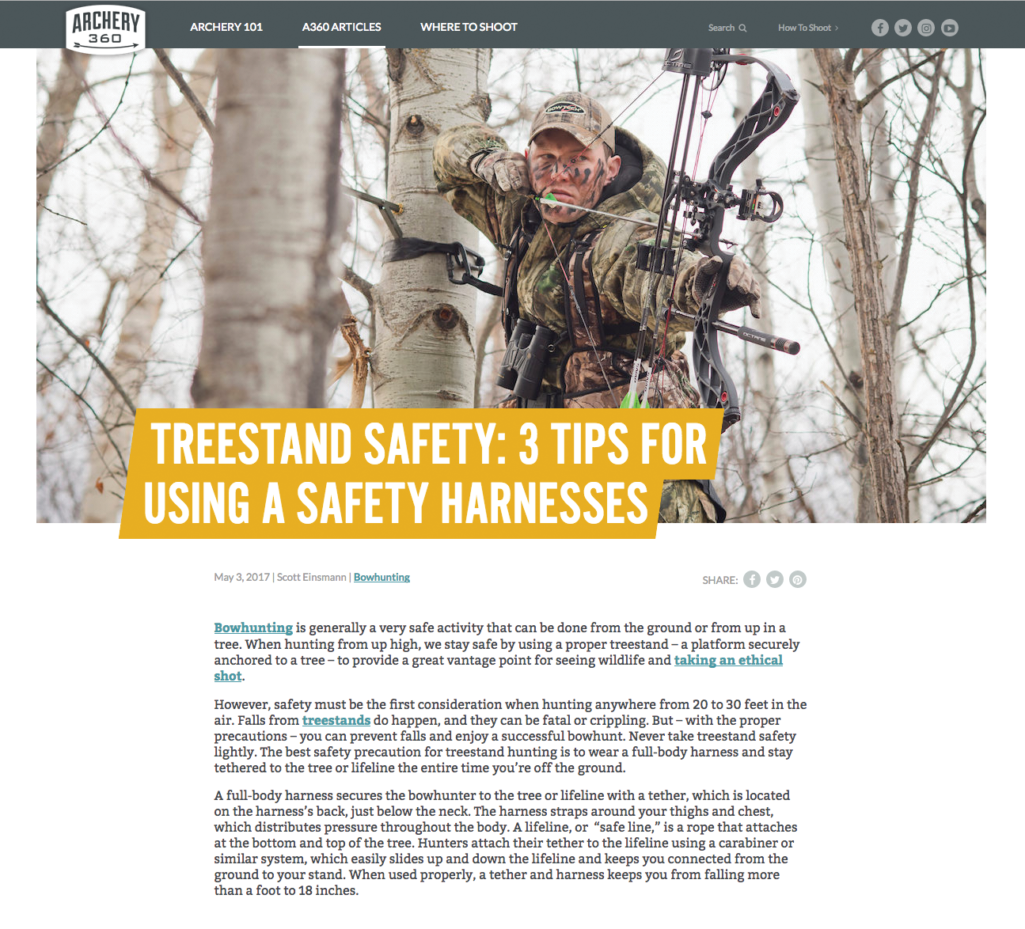
A Closely Guarded Secret
Of course, most retailers already have a Facebook page, and many invest a good deal of time and money into managing their Facebook presence. But that doesn’t mean that they’re using Facebook effectively.
The secret to using Facebook smarter is understanding Facebook’s news feed algorithm — the way each post is rated and ranked for each Facebook user. Facebook’s success is built largely upon its ability to manage content for its users. Rather than bombard users with an overwhelming amount of often irrelevant content, Facebook carefully curates a news feed for each user based on their past behavior.
“The news feed algorithm is one of the most closely guarded secrets out there,” Johnson said. “Facebook will never tell you how it works.”
Strive For Engagement
The important thing for businesses to understand is that Facebook prioritizes user engagement and values content that creates engagement. Even if a user has liked your business page or has friended you, they may not see your posts — a user’s news feed offers them the posts that the Facebook algorithm believes they will find valuable.
Essentially, Facebook doesn’t want its users to be bored because then they may stop using Facebook. Create boring content, and your posts will stop appearing in your customers’ news feeds.
To the news feed algorithm, a user’s level of interaction with a particular post affects the relevance score of similar posts in the future. In 2016, Facebook added reactions, such as “love,” “haha,” “sad,” “wow” and “angry,” allowing users to do more than simply like a post. (This solved the problem many users had of being forced to like sad posts to show support; many users were hesitant to click “like” on a post that said, for example, “My mom was in a car accident.”)
“If you just click ‘like’ on a post, that’s scored lower than a reaction,” Johnson explained. “And a reaction is scored lower than a comment. So the more you comment on a page’s content, the more likely Facebook is to show you content from that page again. The more you react to something versus just liking, the more likely Facebook is to show you that content again. If you stop on a video that is auto-playing in your news feed or you click a link to another website, from Bowhunting 360, for example, Facebook is going to start showing you content from Bowhunting 360.”
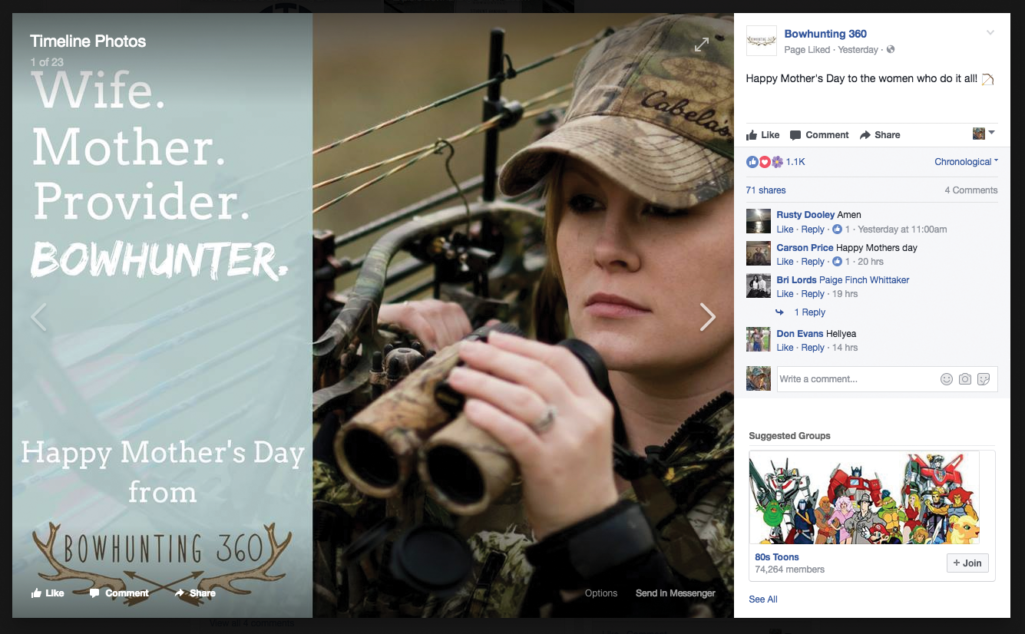
Facebook can even tell how long a user has spent on those websites.
“If you notice, when you click through to an article, you’re still coming through Facebook,” Johnson said. “Facebook is tracking the time you spend reading that article that you clicked on. It knows how interesting you think that content is.”
So the more a user interacts with a post on Facebook, the more likely Facebook is to show the user future content from that source. But how, exactly, do you encourage interaction?
One way, Johnson said, is through what she calls good community management. “The best way to get more comments or reactions is to answer comments,” she said. “To engage with your users. What we see so often in social media is people take the time to post the content, but then don’t go back and moderate the discussion. It’s such a huge mistake. Not only are you building credibility and loyalty with your potential customers when you comment, but you’re also making sure that they’re more likely to come back and comment again, therefore showing more of your content to them in their news feed in the future.”
Creating Quality Content
If you’re running a business and don’t have the luxury of having a dedicated social media manager, you probably don’t have a ton of time to work on managing your Facebook page. That means you have to use your limited time and money as wisely as possible. What’s the best way to do that?
“If I have 30 minutes a week to spend creating content and getting it out on social media, what am I going to do?” Johnson asked. “You always want to think, ‘video, visual, link.’ In other words, what you’re posting need to be a photo, it needs to be a video or it needs to be a link to something of value to your reader.”
That’s because those three types of content are scored higher than plain text by the news feed algorithm.
Next, you need to consider the value your content is going to have for your audience. “Before you create the content, whatever it’s going to be, you want to think about what is the end game for the reader,” Johnson explained. “In other words, what’s the value to them? What are they going to get out of what I’m about to post? You want to make sure that whatever you’re about to share really gives something to that end user. Because if it doesn’t, what’s the point of doing it? It should create value for your potential customer.
“Next, who are you targeting? This is a really important one that I think businesses sometimes miss. They say, ‘It’s good enough to create the content and put it out.’ No. You need to decide who you want to grab with this content.”
That’s because you can boost Facebook posts, targeting them to specific audiences. “Even a tiny boost — $5, $10 — is going to be helpful in reaching a larger, targeted audience of potential customers. You want to decide before you share — and even before you create the content — who it’s for.”
Once you understand what the goal of your post is and who the post is trying to reach, you’ll have a much better idea of the type of content you want to create.
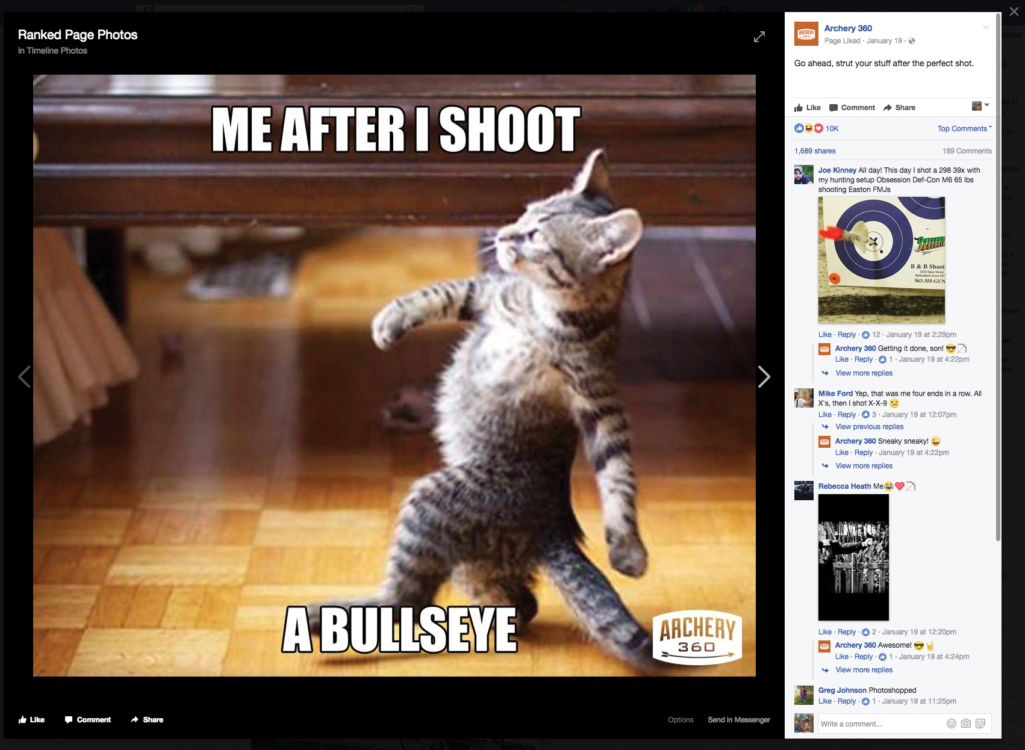
“For example, let’s say it’s July and you’re in the Northeast,” Johnson said. “Your customers are starting to think about bowhunting season. You might decide that your focus with this content is to reactivate some of your customers who’ve kind of gotten disengaged from bowhunting. You decide you want to target men and women between the ages of 40 and 65. So now you want to create a post with those people in mind.
“I probably wouldn’t do a photo because it’s not interactive enough. I probably would do either a how-to post like ‘How to get back into bowhunting if you’ve stopped,’ maybe five quick things that people can do. You make the content what we call ‘snackable’ — very easy to digest. It’s set up as a list.
“You could also do a video post, which is even better because Facebook is going to prioritize video that’s posted natively to Facebook higher in news feed ranking than it will a link to your website.
“If the goal is to drive customers to your store and not necessarily to drive traffic to your website, I’d do that post as a video. Then it serves the additional goal of getting customers familiar with what your store looks like so they feel comfortable coming in. You do a quick two-minute video. You’re going to show them some quick and easy ways to get back into bowhunting.
“You’re going to boost the video when you post it. You’re going to choose that audience that you’ve identified. You’re going to be very targeted about your audience. If you just say everybody ages 18 to 65 who likes bowhunting in your area, you’re going to come back with 30,000 people. You’re not going to hit 30,000 people with that post. The more targeted your audience, the more chance of Facebook actually showing the boosted post to that audience.”
You can refine your targeted group by selecting interests people have. “You might choose people who are interested in archery, bowhunting or fly-fishing,” Johnson said. “Or boating. Or people who also shop at Cabela’s or Bass Pro.”
With practice, creating this kind of content will take you 10 to 15 minutes, and you might spend $10 boosting the post. By creating content with your audience in mind, you’ll be optimizing both your time and money.
Common Facebook Mistakes Archery Retailers Make
I asked Johnson about the biggest mistakes she sees archery retailers making on Facebook. Here’s what she said:
- Not doing Facebook at all.
- Posting plain text posts. “Nobody’s going to see that,” she said. “Facebook doesn’t prioritize it.”
- Taking bad photos. “You can go on YouTube to learn how to make a better video or better picture,” she said. “We have articles on the ATA website about how to take better pictures for social media.”
- Like-baiting or comment baiting, where you put up a post and ask people to like, comment or share. “Facebook ranks it as low-quality content and won’t show it to many people,” Johnson warned. Want to ask people to like, comment and share? Do it in a video.
- Posting images that are heavy on text. “I’ll see a post where someone has put up their latest flyer,” Johnson said. “You’re going to really struggle for Facebook to actually show that to people because there’s text covering more than 20 percent of an image. Facebook sees that as an ad, and they want you to pay to promote it. And if you are paying to promote it, they see it as low-quality content. So they’re not going to show it to as many of your users.”
Johnson recommends that you spend time learning more about Facebook. In addition to www.archerytrade.org, where the ATA has a number of excellent articles on social media, you can check out Facebook’s business page at www.facebook.com/business or resources like Social Media Today at www.socialmediatoday.com.
Featured photo: iStock



